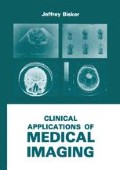Abstract
The “bread-and-butter” radiographic procedure for visualizing urinary tract pathology has been the abdominal film and intravenous urogram. These studies have been supplemented by the cystogram, retrograde pyelogram, and ure-throgram performed in either a retrograde or antegrade fashion. More invasive procedures such as angiography, venography, and retroperitoneal pneumography have also been involved in the radiologic workup of urinary tract pathology. The first nonradiographic procedures utilized in genitourinary tract imaging were the radionuclide renal scans. Within the past 10 years, ultrasound and computerized tomography (CT) have also complemented, and in some circumstances replaced, the aforementioned contrast radiographie studies.
Access this chapter
Tax calculation will be finalised at checkout
Purchases are for personal use only
Preview
Unable to display preview. Download preview PDF.
References
Conway JJ, Belman AB, King LR: Direct and indirect radionuclide cystography. Semin Nucl Med 1974;41:197.
Dubovsky EV, Bueschen AJ, Tabin M, et al: A comprehensive computer assisted renal function study: A routine procedure in clinical practice, in Hollenberg NK, Lange S (eds): Radionuclides in Nephrology. New York, Thieme-Stratton, 1980, pp 52–58.
Federle MP, Goldberg HI, Kaiser L, et al: Evaluation of abdominal trauma by computer tomography. Radiology 1981;138:637–644.
Goldman SM, Minkin SD, Naravol DC, et al: Renal carbuncle: The use of ultrasound in its diagnosis and treatment. J Urol 1977;118:525–528.
Hansen GC, Hoffman RB, Sample WF, et al: Computed tomography diagnosis of renal angiomyolipoma. Radiology 1978;128:789–791.
Koff SA, Thrall JM, Keyes JW: Diuretic radionuclide urography: A non-invasive method for evaluating nephroureteral dilatation. J Urol 1979;122:451–454.
Kontzen F, et al: Comprehensive renal function studies:Technical aspects. J Nucl Med Tech 1977;5:81.
Mascatello VJ, Smith EH, Ceurrerra GF, et al: Ultrasonic evaluation of the obstructed duplex kidney. Am J Roentgenol 1977;129:113–120.
Parker MD: Acute segmental renal infarction:Difficulty in diagnosis despite multimodality approach. Urology 1981;18:523–526.
Pollack HM, Goldberg BB: The Kidney, in Abdominal Gray Scale Ultrasonography. New York, John Wiley & Sons, 1977.
Weyman PJ, McClenan BL, Stanley RL, et al: Comparison of computed tomography and angiography in the evaluation of renal cell carcinoma. Radiology 1980;137:417–424.
Author information
Authors and Affiliations
Rights and permissions
Copyright information
© 1986 Plenum Press, New York
About this chapter
Cite this chapter
Bisker, J. (1986). Genitourinary Tract. In: Clinical Applications of Medical Imaging. Springer, Boston, MA. https://doi.org/10.1007/978-1-4684-5083-5_4
Download citation
DOI: https://doi.org/10.1007/978-1-4684-5083-5_4
Publisher Name: Springer, Boston, MA
Print ISBN: 978-1-4684-5085-9
Online ISBN: 978-1-4684-5083-5
eBook Packages: Springer Book Archive

